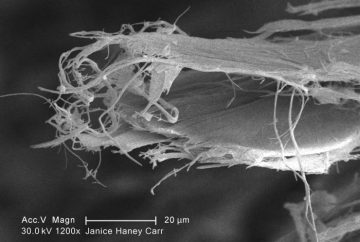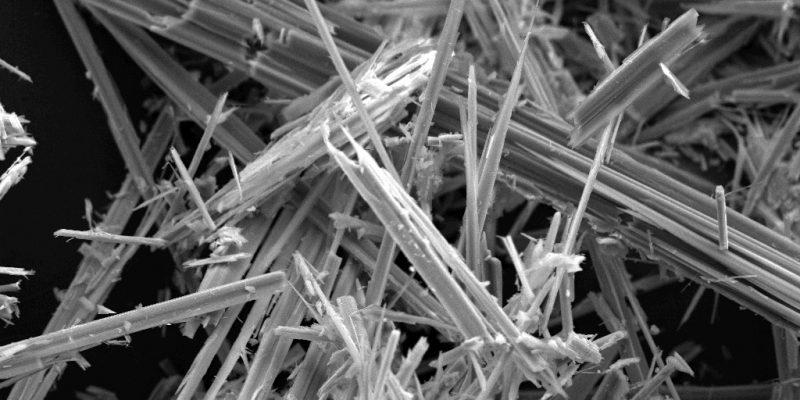
Asbestos is a type of naturally occurring fibrous material. There are six types: chrysotile (white), crocidolite (blue), amosite (brown), anthophyllite, tremolite and actinolite; with white and brown being the most common.
What is it used in?
It can be mixed with other materials to be used as fire retardants, insulation and most commonly in cement. It’s also used in roof tiles and many other applications, see here for a full list.
What health risks are related to it?
Worries about the material have been around since the Greeks first used the material over 2000 years ago. Mesothelioma, Lung Cancer, Asbestosis and Diffuse Pleural Thickening are all caused by exposure to asbestos.
Mesothelioma is always fatal, whilst Lung Cancer and Asbestosis is often fatal. All four can take between 15 and 60 years to show symptoms.
How is it dangerous?
Absestos fibres individually aren’t visible to the naked eye. This means if they’re disturbed they can be ingested very easily, making them so dangerous. According to Lucie Stephens: “You can get two million fibres on the head of a pin.”
It’s classified as a human carcinogen and is banned in the EU.
What are the local councils doing to remove it from schools?
Poole Borough Council could not comment in the allotted time frame when asked what they were doing to remove this, whilst Bournemouth Borough Council “will not be removing the asbestos from schools, but will be continuing to manage the risk of asbestos in these premises.”
Answers taken from Asbestos.com, HSE, Mesthelioma Cancer Alliance, BBC and Mesothelioma & Asbestos Information Exchange.
See more:
Asbestos still prevalent in more than 100 Dorset schools
Daughter of teacher killed by asbestos exposure wants annual report by every school


 Daughter of teacher killed by asbestos exposure wants annual report by every school
Daughter of teacher killed by asbestos exposure wants annual report by every school